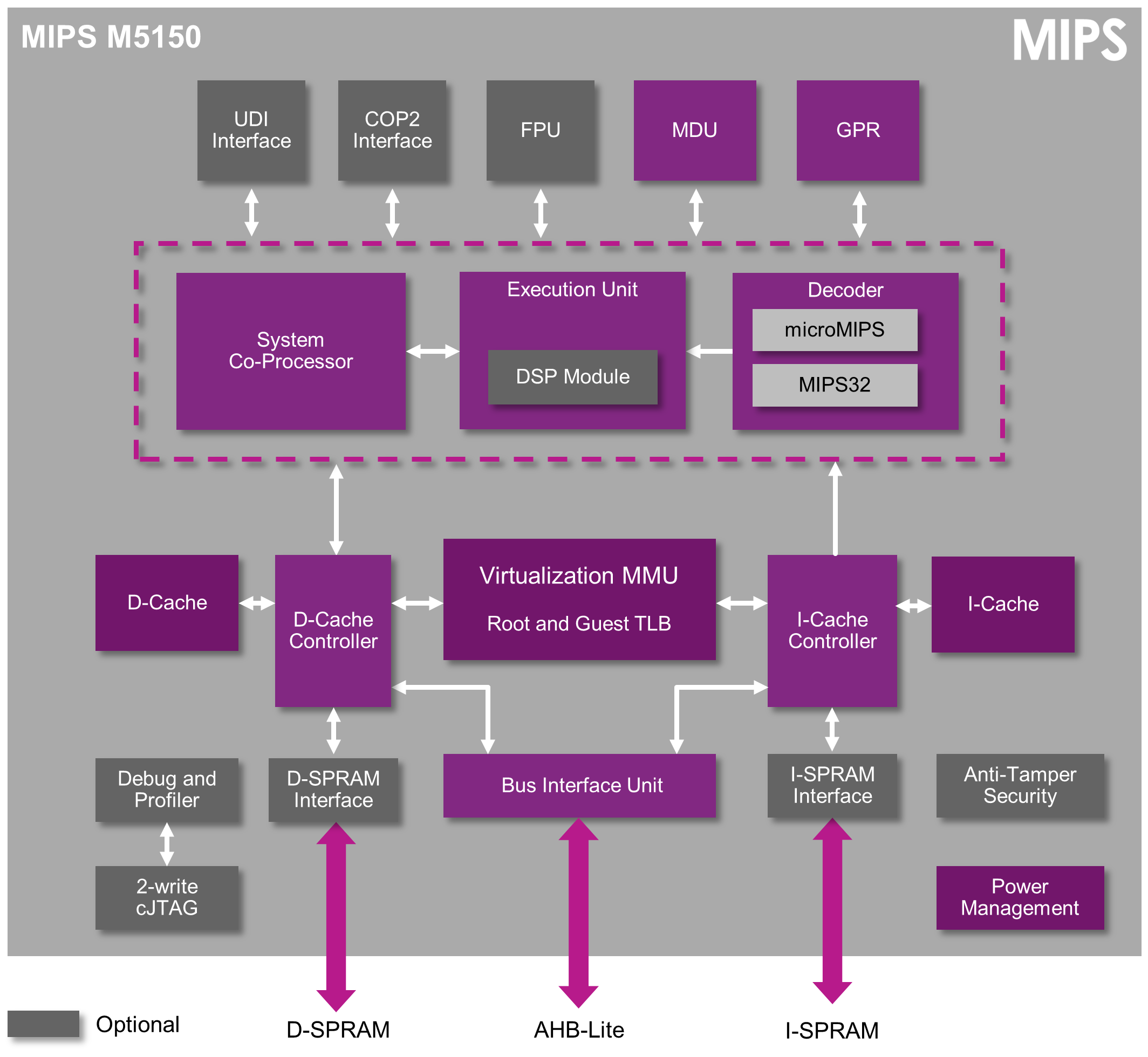Microchip 'PIC32MZ EF' Microcontrollers Bring Imagination's MIPS M-class CPUs To IoT Devices
Microchip Technology Inc., a provider of microcontroller, mixed-signal, analog and Flash-IP solutions, announced that the CPU in its PIC32MZ family has been upgraded to MIPS M5150, Imagination's latest M-class (microcontroller) processor.
Hardware
The new MIPS-based Microchip PIC32MZ EF MCUs bring a clock speed of 200 MHz and a 330 DMIPS peak performance. They also include an integrated hardware floating point unit (FPU) for fast single- and double-precision math, 16 KB I-cache and 4 KB D-cache, up to 512 KB high-speed SRAM, and 2 MB flash.
The MIPS M5150 processor comes with a 5-stage pipeline based on a Harvard architecture with separate buses for instructions and data. It also has other MIPS32 Release 5 features including new instructions for enhanced functionality, secure debugging, and a DSP engine.
Software
The MIPS M5150 supports the microMIPS ISA, which contains most of the MIPS32 instructions in a new 32-bit encoding scheme, with some instructions also encoded in 16-bit format. This has the advantage of higher code density thanks to the 16-bit instructions, while also maintaining similar performance to the MIPS32 mode.
Security
One of the best features of Imagination's latest CPUs, including this M5150 microcontroller processor, is the OmniShield domain isolation system. It can keep up to seven separate operating systems and groups of applications running in parallel and isolated from each other. This can ensure that if one of the domains gets infected with malware, it can't affect the other domains.
Such isolation is one of the best and more practical ways to limit the spread of malware, whether it's in home computers (like with attempts from Qubes OS), enterprise systems or "Internet of Things" (IoT) devices, which many security experts expect to make the world a less safe place as they proliferate.
Microchip's PIC32MZ EF MCUs also bring a random number generator, a crypto engine for fast encryption/decryption, and advanced memory protection.
Get Tom's Hardware's best news and in-depth reviews, straight to your inbox.
Imagination believes that chips such as Microchip's PIC32MZ EF family can shorten the time to market for device manufacturers and can bring much-needed strong security to the IoT world.
According to Imagination, there are already multiple development boards in production that are using the Microchip PIC32MZ EF MCUs, including the new version of the Arduino-compatible Digilent chipKIT Wi-FIRE development board.
Follow us @tomshardware, on Facebook and on Google+.
Lucian Armasu is a Contributing Writer for Tom's Hardware US. He covers software news and the issues surrounding privacy and security.
-
pjmelect How is this news, this chip has been around for months now. Still it is an interesting chip and I intend to evaluate it soon when I get the time.Reply -
b_able The PIC32MZ based on the microAptiv MIPS core has been around for a couple years. The EF -G and -H versions are new. They are based on the M5150 MIPS core which includes a double precision FPU and Virtualization, the latter providing the basis for hardware security. The -H version includes a crypto engine.Reply
-
targetdrone The IoT is going to be the death of us. There are simply things that have no business being networked let alone connected to the internet. Manually controlled toilets and water faucets were not an aesthetic choice on the Galactica.Reply -
Alexandru Voica The PIC32 series has two families: PIC32MZ and PIC32MX. The PIC32MZ EF MCUs announced this week use a MIPS M-class Warrior CPU. This M-class core (M5150) implements Release 5 of the architecture vs. the older cores (microAptiv) which were based on Release 3. Release 5 adds several new features to MIPS32, including hardware virtualization.Reply


